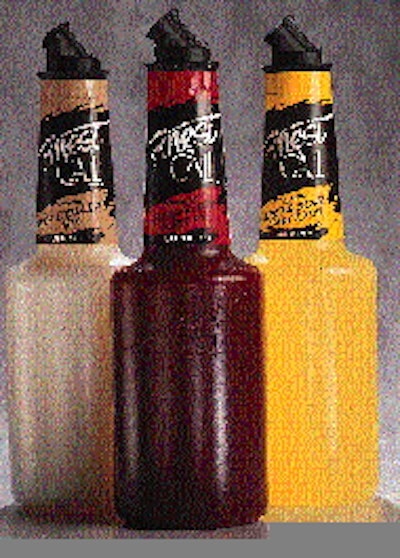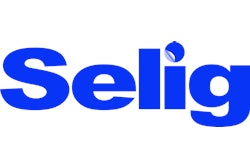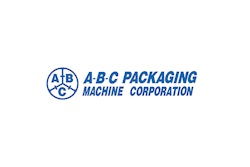In March, American Beverage Marketers reintroduced its line of Finest Call(TM) cocktail mix products in a clear 1-L bottle made of polyethylene terephthalate. What allows the company to warm-fill the products into conventional PET bottles is the addition of liquid nitrogen (LN2) that creates pressure to keep the bottle sidewalls from paneling as the product cools and internal vacuum pressure builds.
At its "absolute" temperature, LN2 is LN2 has been used for years, often to provide internal pressure for noncarbonated beverages filled in light-weight aluminum cans. Now, bottlers who warm-fill mixes, edible oils and sauces can introduce LN2 gas to eliminate the need for heat-set bottles or extensive sidewall ribbing.
ABM distributes 14 cocktail mix flavors nationwide, to taverns and other on-premise customers. Thirteen products are in PET, a Bloody Mary mix is filled into glass. And for the first time, the New Albany, IN-based firm will introduce Finest Call to the retail market. At press time, retail product was ready for limited distribution, in the same 1-L bottles, using the same components. PET's clarity and barrier characteristics, company president George Wagner notes, are particularly appealing to retailers.
The PET bottles are injection/stretch blow-molded by Grafco (Hanover, MD). The system used to dispense the LN2 is from Reynolds Metals Company's Can Div. (Richmond, VA).
Before shifting to PET, ABM sold Finest Call in a polypropylene bottle. The PP version represented a step up from its high-density polyethylene predecessor. The switch to PP was made a little more than a year ago (see Packaging World, May '96, p. 43). That bottle earned a Bernard M. Seid Best of Show Award from the National Assn. of Container Distributors for ABM's distributor Ryco Packaging (Omaha, NE). ABM also procures the PET bottles through Ryco.
Breaking barriers
"We decided to switch to PET for its performance characteristics compared to PP," says Wagner. "The oxygen barrier is superior compared with the former bottle. Clarity was another important issue. Even though the PP bottle provided better clarity than the milky HDPE version we had originally, the PP offers contact clarity, in which you can see the color of the product through it. However, the PP was still a bit cloudy compared to clear-as-glass PET."
Wagner says, "it was our goal all along to get into PET," but until recently, he admits, sales volume couldn't justify the economics of the move. "Our sales of Finest Call grew about 60 percent in '96 compared to '95. And," he adds, "the development of PET over the past few years made it the obvious choice. The aesthetic appeal PET provides is important to our on-premise customers who are very image-conscious, and it's imperative for the retail market."
Notable bottle
By late last year, ABM and Ryco began searching for a competent PET molder. "We talked with different companies," recalls Wagner. "Many of them told us that to warm-fill PET, we'd have to use a fully-ribbed bottle. That didn't appeal to us. Ryco led us to Grafco and we chose Grafco for its ability to provide custom solutions and its willingness to meet our needs."
According to Dale Behm, Grafco's director of engineering, "most of the challenges involved in the Finest Call bottle were in the up-front design and engineering. We used a single-cavity set-up mold, making numerous insert changes so we could zero in on what we needed to do to make a prototype bottle."
By the end of February, Grafco made its initial production runs on the 70-g, 38-mm bottle. "We used several tricks of the trade," quips Behm, "to create the bottle." Unlike other companies that recommended extensive ribbing, Behm says, "we sat down with George and developed alternatives. We limited the number of ribs necessary to support the bottle."
The Finest Call bottle relies on two subtle primary "ribs" that circle the bottle, one located just above the base, the other just below the bottle's shoulder.
Additional support comes from the rather clever use of recessed panels on the front and back of the bottle. Each panel is embossed with the Finest Call logo. In shape, these recessed areas replicate the "splash" graphic on the bottle's neck label. And while these logos might look solely like graphic devices, they primarily add structural support.
Grafco uses a Nissei ASB 650 (Atlanta, GA) single-stage machine to injection-mold a preform and stretch/blow-mold the preform into a bottle. The PET resin is supplied by Nan Ya Plastics (Livingston, NJ). Grafco adapted one of its own proprietary molds to make the preform. The custom mold used to stretch/blow-mold the Finest Call bottle is owned by ABM.
The six-cavity Nissei 650 produces more bottles per cycle than the two- and four-cavity machines ABM's former blow molder used for the PP bottle. The improved output and cycle times, says ABM's Wagner, "provided an economic advantage for us." That, he explains, "is because Grafco's higher bottle-per-minute output means that they get more production out of their equipment than our previous molder did. That means Grafco's costs are less than our former molder's costs. They pass those savings along to us."
Wagner says he expects payback on the molds "will take less than one year." Economic advantages are especially helpful since PET resin costs about 4% more than the PP.
Depending on the success of the new product, a higher-cavitation mold may be necessary. "We'd have to produce in the neighborhood of seven to 10 million bottles a year to merit the use of additional cavities," Wagner contends.
The injection/stretch blow-molding process produces "a very precise finish," says Wagner. "As a result, we modified our custom closure by adding to the length of the threading to match the bottle finish. Now the closure fits more securely on the bottle."
According to Grafco, the PET bottle's oxygen transmission rate is 4 cc/100 sq"/24 hr, compared to 230 cc/100 sq"/24 hr for PP. That advantage is amplified, says ABM's Wagner, by Grafco's process which increases the level of crystallinity in the bottle sidewalls. How this is done, however, is something Grafco wouldn't divulge.
"That helps to extend shelf life," Wagner says. "We didn't have any qualms with our shelf life previously," he notes, "except for some of our products that had only a six-month shelf life. But we're always looking to improve on our shelf life. That was one of the goals in our switching to PET bottles. The PET bottle has more than doubled the shelf life of Finest Call compared to the polypropylene version." The former bottle had a six-month to two-year shelf life, depending on the mix.
Cooperative research
Grafco places molded bottles neck-down, 12 per printed corrugated reshipper case. Cases are palletized and shipped to ABM's New Albany plant. At the plant, Finest Call is filled on the same line as it was when PP bottles were used, with the same equipment for the most part.
Operators turn cases upside-down so that bottles stand right-side-up on a conveyor. Filling is done at speeds in the 130- to 150-per-minute range on a 24-head rotary pressure/gravity filler. Cocktail mix fill temperatures vary between 110°F and 165°F, the same as they were with PP.
After filling, bottles are conveyed to Reynolds' LN2000 system. Wagner says he originally got the idea to use liquid nitrogen from a story in Packaging World on how LN2 countered the internal pressure within a jar hot-filled with jam (see PW, July '96, p. 34). Those jars were produced with polyethylene naphthalate (PEN).
At press time, Grafco's Behm said that the bottle maker was entering into an alliance with Reynolds to further research the use of LN2 for a variety of applications using PET.
Metering matters
The LN2000 has been used primarily in Europe, though Asia, and now the U.S., are investigating its potential for applications other than cans, according to Shawn Burrows, sales service representative for the Reynolds Metals Can Machinery Div.
The LN2000 includes a stainless-steel outer shell. The LN2 itself is supplied by local firms, in "dewars" usually containing 160 or 185 liters (42.27 and 48.88 gal) of the liquid. The dewars are specially insulated to maintain the LN2's cold temperature.
As filled bottles index single-file to the LN2000, fiber-optic sensors monitor a bottle's speed and relay it to a computer. A second set of sensors are positioned at the point where the LN2 is dispensed. When the bottle is sensed at this position, the computer triggers a solenoid to activate a valve that dispenses the LN2. Bottles con-tinue at line speeds through the dosing process, without stopping. The dispensing valve is closed by a simple spring mechanism.
The LN2 is dispensed from a point about 3/8" above the top of the bottle. The dose varies between 1/5 and 1/2 g, says Burrows, depending on the specific product. A larger drop is added to products that contract more severely.
'No-dome' seal
The LN2000 is mounted to the same automatic capper that had been used before. Capping is done after LN2 is injected. It applies an injection-molded PP closure supplied by Hi-Tech Mold And Tool (Louisville, KY). The change in threading to accommodate the bottle's more precise neck finish is the only new aspect of the closure. Unlike many closures that are shaped flat to fit right against the top of the bottle, this one protrudes about an inch above the bottle finish to provide a pour spout.
Because of the protrusion, Wagner says, "We were afraid that the nitrogen gas would push upward against the closure and cause a 'doming' effect with the liner." That could cause the liner to slightly move before sealing and prevent a solid seal, or result in a breakage between the liner and bottle after sealing that could cause leakage.
To avoid those potential scenarios, ABM upgraded to induction sealing. Its previous sealing method for the PP bottles is described by Wagner as "pressure sealing that causes the seal to activate when the cap is torqued down tightly onto the bottle."
Wagner turned to a Model 2221-W induction-sealing system from Pillar Technologies (Hartland, WI). Because of the unusual closure, "we originally used the Pillar system on a contingency basis," he says. "After it proved itself in tests, we bought it. It has worked tremendously for us ever since."
The Pillar induction unit seals the liner to the bottle's finish. Supplied by Selig Sealing Products (Forrest, IL), the liner includes a foam backing that contacts the closure, 1 mil of foil, and a heat-sealant layer.
On the line at New Albany, the induction-sealed bottles index to an automatic labeler that applies a paper label to the neck of the bottle. Bottles are then hand-packed, 12 per reshipper. Since last year, ABM automated its palletizing process by purchasing an A-B-C (Tarpon Springs, FL) Model 72X palletizer.
Expect further changes
ABM continues to look for ways to improve its Finest Call packaging process. It's already working closely with Grafco on a bottle for its Bloody Mary mix, which is currently sold in a glass bottle, also in a 1-L size. "Tomato-based products are especially sensitive to oxidation compared to the other cocktail mixes we offer," says Wagner. "We're testing it in warm-filled PET, and so far it looks promising." He says the cost difference between glass and PET would be insignificant.
Bottle lightweighting is also in the offing, courtesy of the circular ribs, recessed panels and the LN2. "Grafco is running tests on lighter-weight bottles already," Wagner says. "We'd like to see the bottle reduced from 70 to 60 grams in the near future."
Grafco and Wagner are also looking at blends of PET/ PEN for "items that are highly sensitive to oxygen, like Bloody Mary mix, strawberry puree and pi"a colada. In those instances, PEN would provide a stronger barrier," he notes. "But for economic reasons, we're looking at PET/PEN blends as opposed to straight PEN.
"We want to see if these blends will meet our needs so that we'll know if they'll work if they're use is approved by the FDA," he says. "We're always trying to stay on the forefront of technology."
American Beverage Marketers is making quite a splash with its Finest Call cocktail mix bottle. The company's competitors, as well as other food and beverage packagers who could benefit by using liquid nitrogen for PET applications, will likely be watching closely to see how well the technology swims.






























